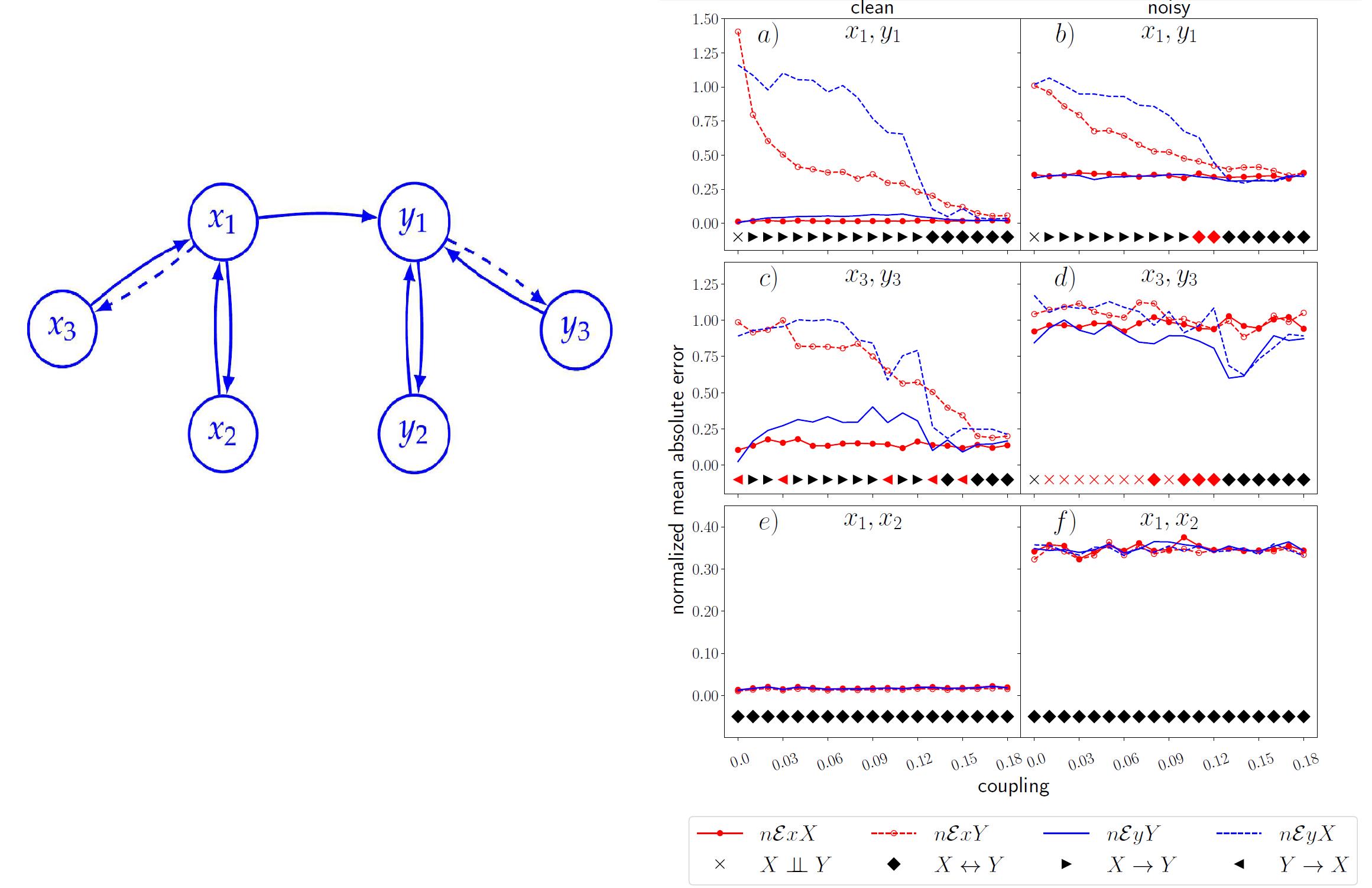Distinction between the driving and the driven dynamical systems
Investigators: Anna Krakovská, Jozef Jakubík
Methods of causal analysis have been applied in diverse scientific fields from economics, through climate sciences to research trying to understand connections in the human brain. We already know that time series from dynamical systems require different approaches than, for example, causal analysis of interconnected autoregressive processes. In [1] we propose using fractal correlation dimension (D2) to reveal driving relationships between and within the systems. Unlike other approaches, D2 can also identify cases of two causally independent systems that are controlled by a hidden third system. The precondition for the use of D2 is that the investigated time series are generated by dynamic systems and are sufficiently long and clean. For applications where this condition is not ideally met, but deterministic dynamics still dominate in the data, we introduce and make publicly available two algorithms based on cross-predictions and mixed predictions, respectively, in reconstructed state spaces [2], [3].
The study [2] also provides a new perspective on cases where the investigated variables have poor observability due to the complex nonlinear inflow of system information, namely that the possible failure of causality detection is not due to the methods themselves but the use of data that do not allow reliable reconstruction of the underlying dynamics.
FIG.:
Left: Fluence graph of two unidirectionally coupled Rössler systems with coupling strength below the synchronization threshold. Dashed arrows symbolize nonlinearity in the connections.
Right: Results of the cross-predictions method. Normalized mean absolute errors (nE) of self-predictions and cross-predictions for pairs of variables of coupled Rössler systems. Results for 19 increasing values of the coupling strength, both for clean data and data with a signal-to-noise ratio of 10. The bottom of each picture shows conclusions of the method about the type of causality (red for symbols of incorrect detection and black for correct detections). When using observables to which information flows nonlinearly (x3, y3), there are many erroneous detections (c, d).
Related projects: Solved within the projects APVV-15-0295 and VEGA-2/0081/19.
Publications:
- KRAKOVSKÁ, Anna (2019). Correlation dimension detects causal links in coupled dynamical systems. In Entropy, vol. 21, no. 9, p. 818. ISSN 1099-4300. (2.419-IF) Q2
- KRAKOVSKÁ, Anna – JAKUBÍK, Jozef (2020). Implementation of two causal methods based on predictions in reconstructed state spaces. In Physical Review E, vol. 102, p. 022203. ISSN 2470-0045. (2.296 – IF) Q1
- Jozef Jakubík (2020). Cross Prediction and Predictability Improvement (https://www.mathworks.com/matlabcentral/fileexchange/75057-cross-prediction-and-predictability-improvement), MATLAB Central File Exchange.
 Contacts
Contacts Intranet
Intranet SK
SK
